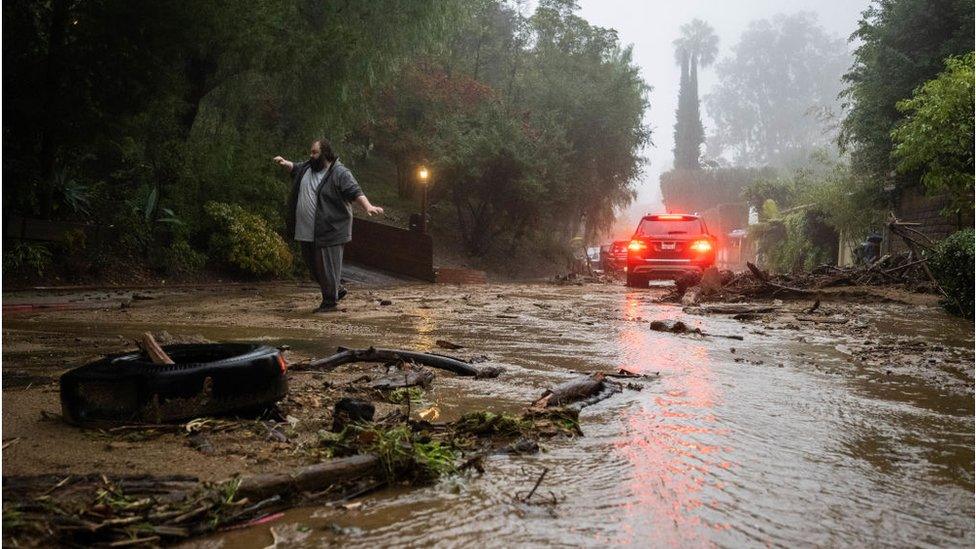Storms relentless as California drenching goes on
- Published
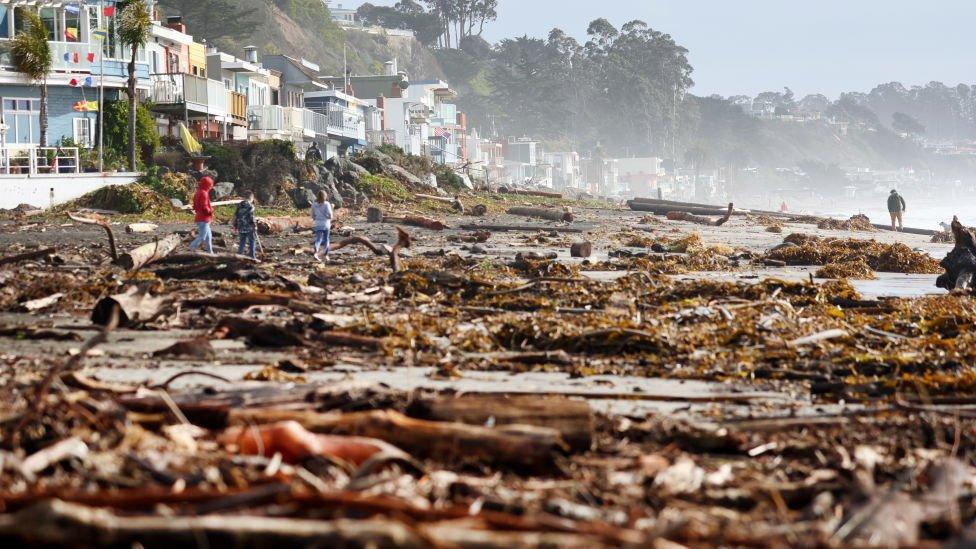
A beach community wrecked by a recent California storm
Multi-million dollar beach homes battered by winds, cars swallowed up by sinkholes, and over a dozen people killed - after weeks of extreme storms, many Californians are wondering when it will end.
The state's famously sunny southern coast has been hit by storm after storm since the December holidays, eroding roads, felling trees and causing landslides.
As of Tuesday evening, at least 17 people had died in weather-related incidents since the storms began, Governor Gavin Newsom said.
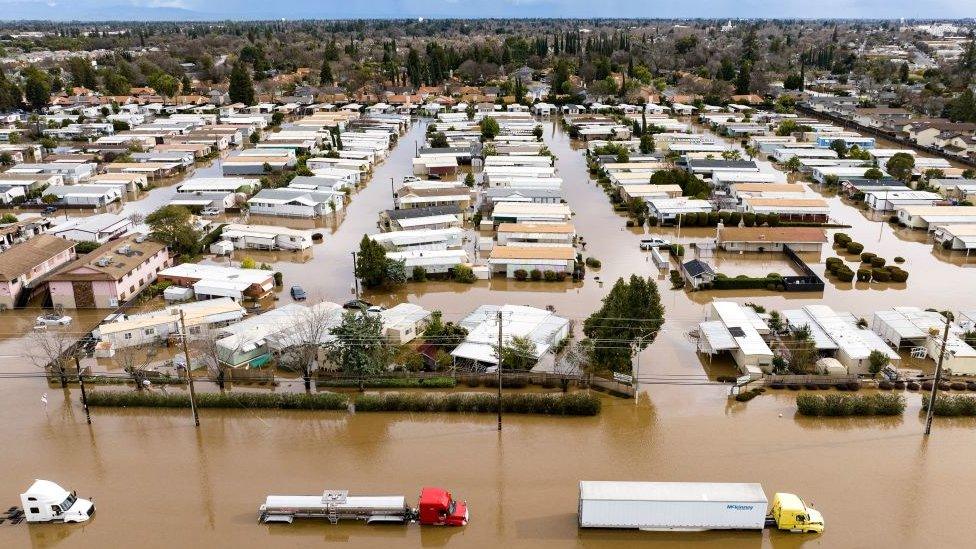
A flooded neighbourhood in California
More than 22 million people are currently under flood watch, according to the National Weather Service - almost as many as the population of Australia - and thousands have had to evacuate.
In Santa Cruz, a surfing community south of San Francisco, the beach has become unrecognisable, with the sand now completely covered in timber from huge trees which have been ripped out of the ground elsewhere and smashed to pieces.
Californians salvage treasured possessions after flood
The BBC went to other communities that had been flooded and witnessed how high rivers had jumped. One had climbed 17 feet in the last few days.
Houses haven't had a chance against the rapid speed of rising waters and flooding, leaving many people marooned at the top level of their houses unable to leave until the water subsides.
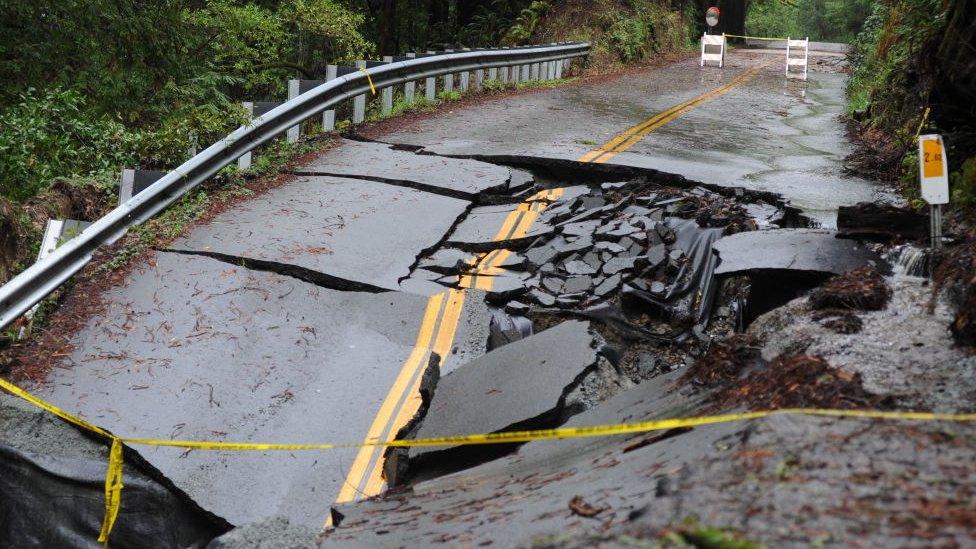
Giant sinkholes have appeared in roads damaged by floodwaters
While it is normal to have wet weather during the winter months, weather expert Andrea Bair, a climate services programme manager for the National Oceanic and Atmospheric Administration (Noaa), said the "parade of storms" that has walloped the state is unusually intense.
Weather phenomena like atmospheric rivers and bomb cyclones, combined with heavy winds, have packed repeated punches.
Although it is too early to say what has caused this bad run of weather, Ms Blair said climate change would make extreme weather more and more common.
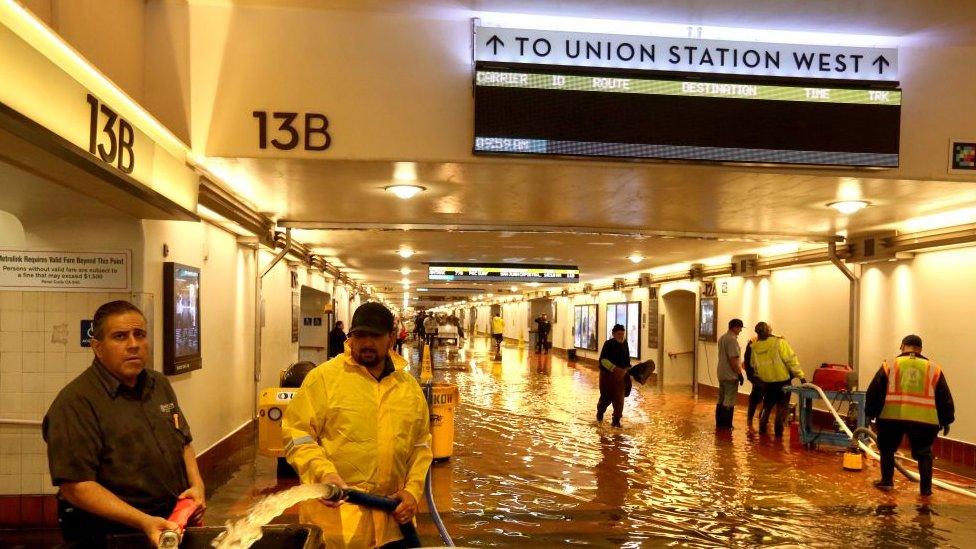
The Los Angeles subway has flooded as the city struggles to clean up with a series of bad storms
The successive storms have compounded the damage - as soil moisture increases, flooding becomes more likely. As trees are damaged repeatedly, they become more likely to fall. Areas can also become more susceptible to landslides and sinkholes.
All told, Noaa estimates the storms could cost the state $1bn in damage and clean-up.
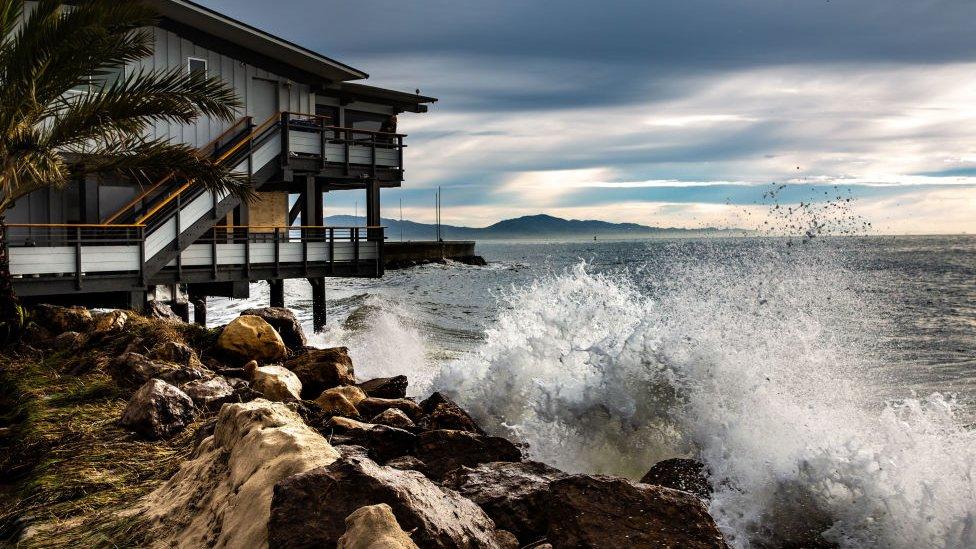
The state does not look like it will get a break anytime soon. More storms are expected this weekend and into next week, Ms Blair said. Although they may be milder than the storms from the past weekend and Monday, the repeated destruction means they will likely still cause a lot of damage.
"It really isn't going to take a lot of rain or you know those extreme strong winds to really cause havoc," Ms Blair said. "It's the repetitiveness of this storm after storm after storm that is the reason why we're where we are at today."
Related topics
- Published10 January 2023
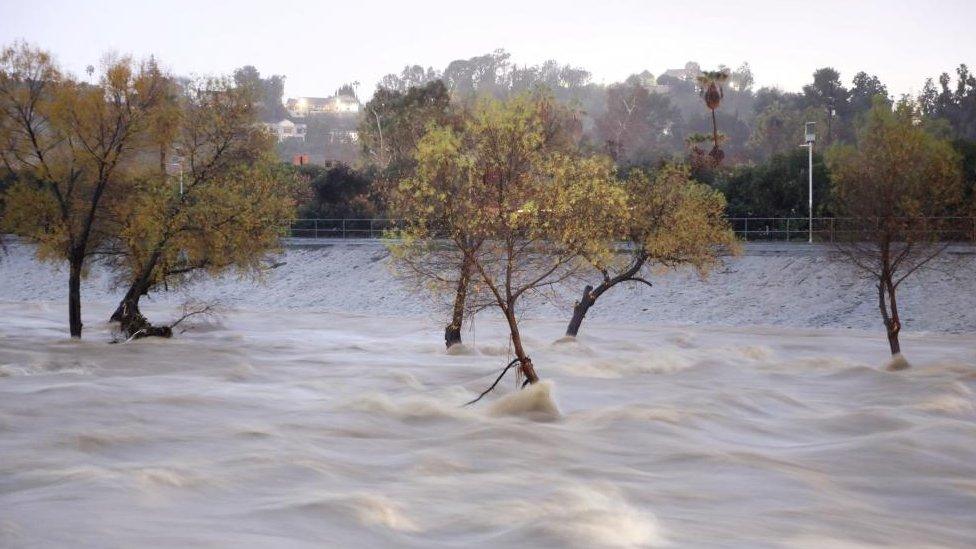
- Published10 January 2023
